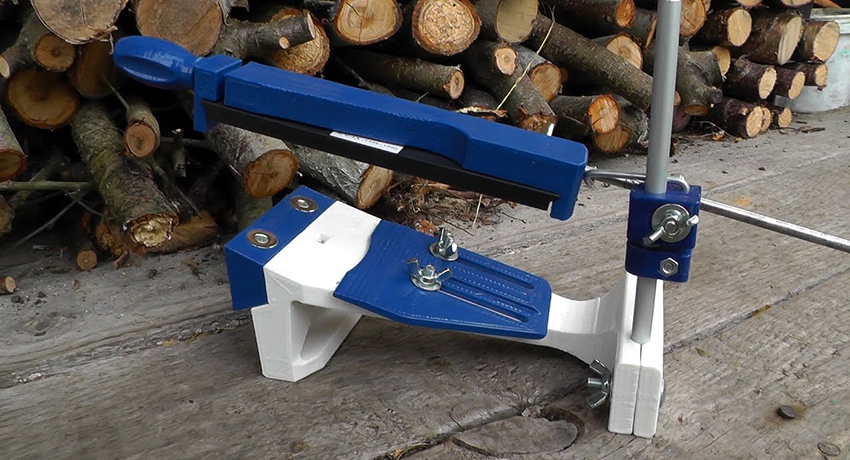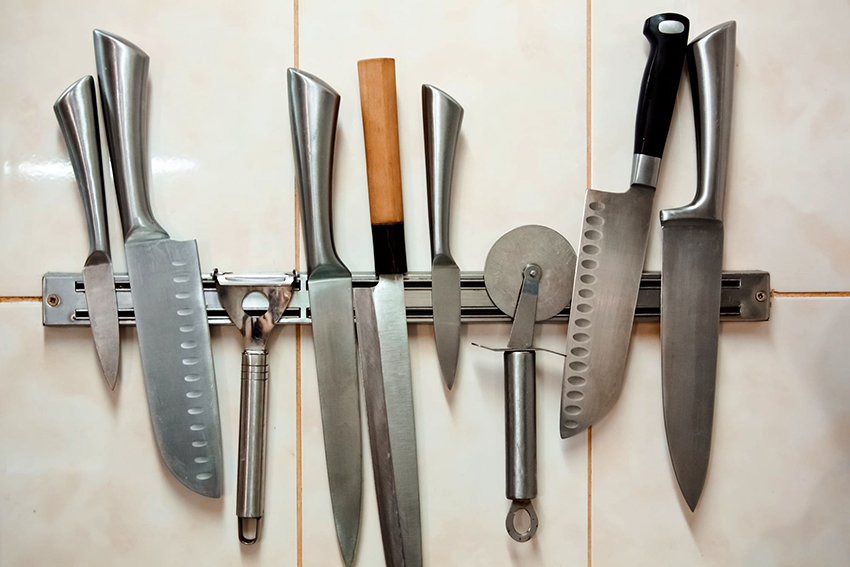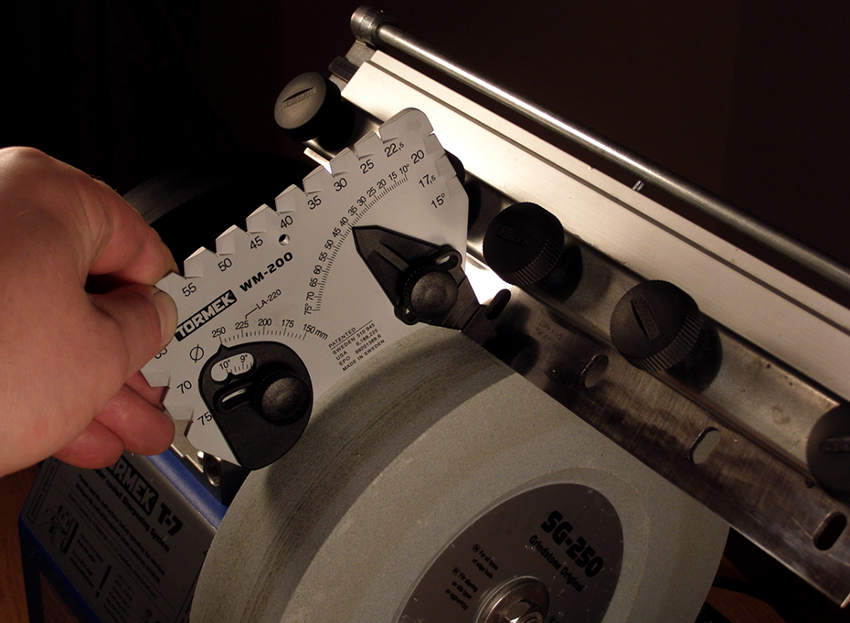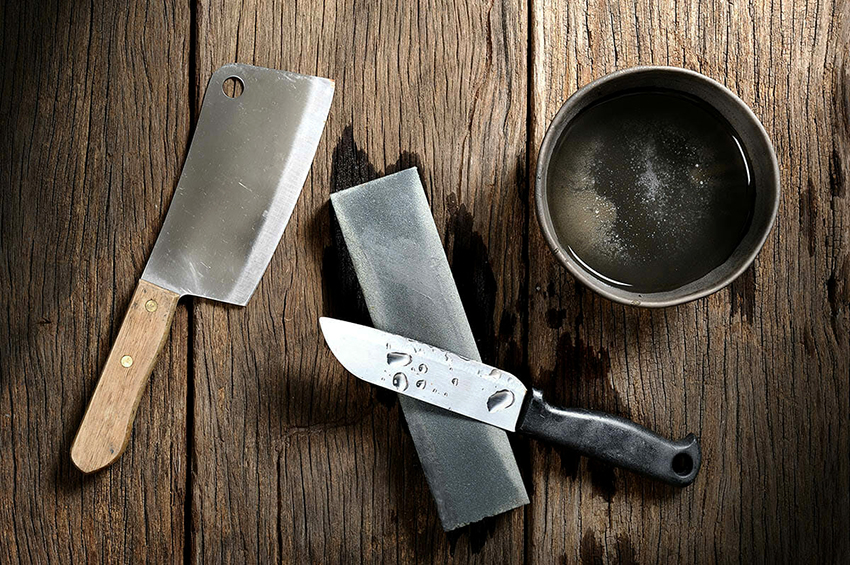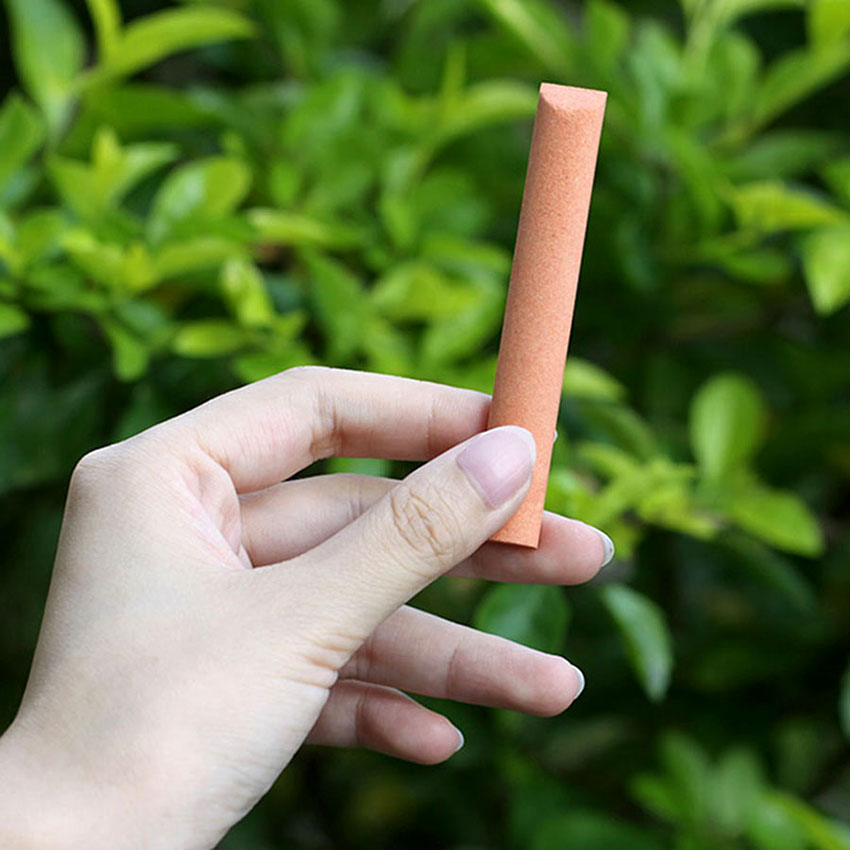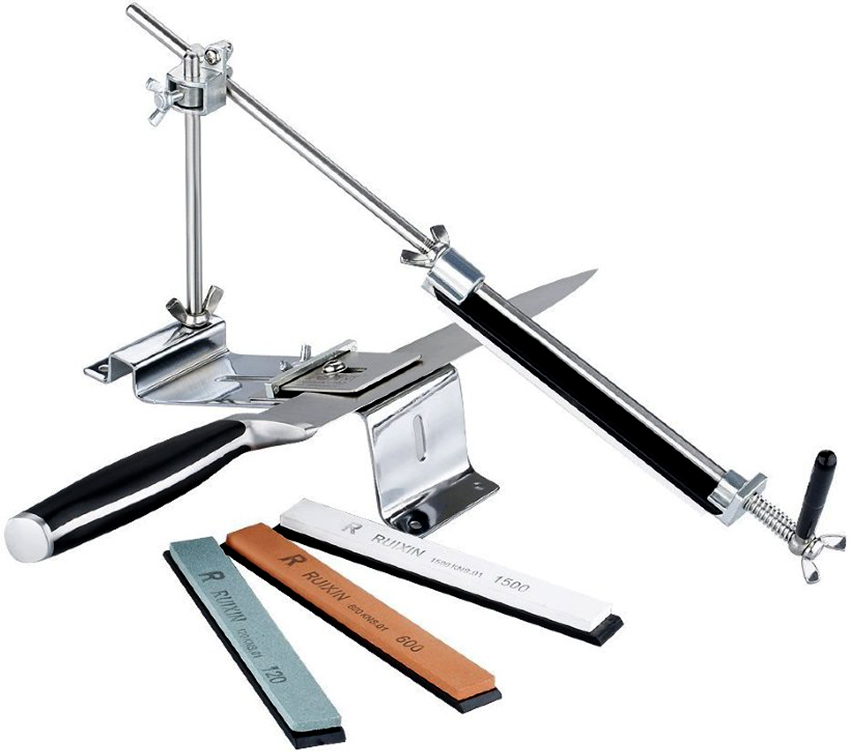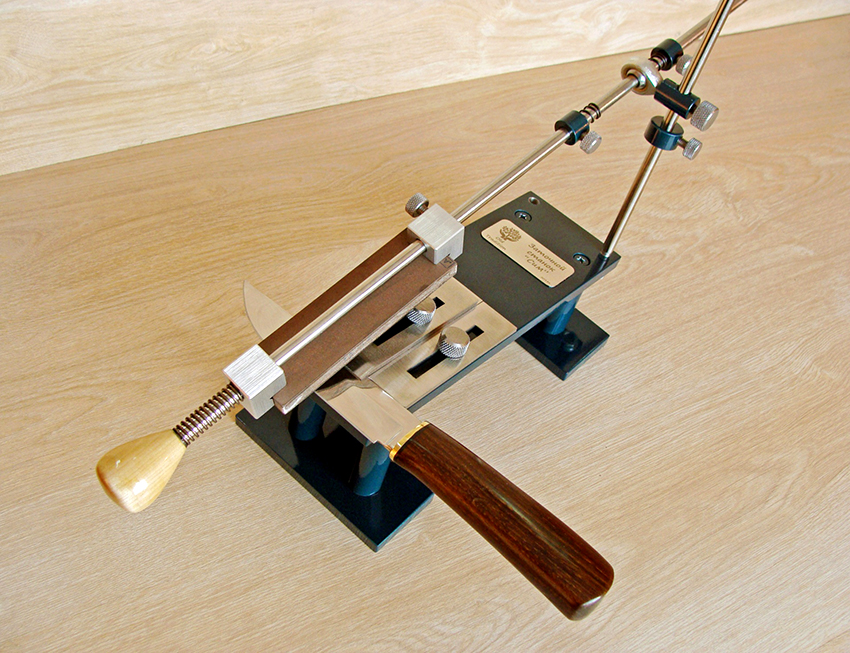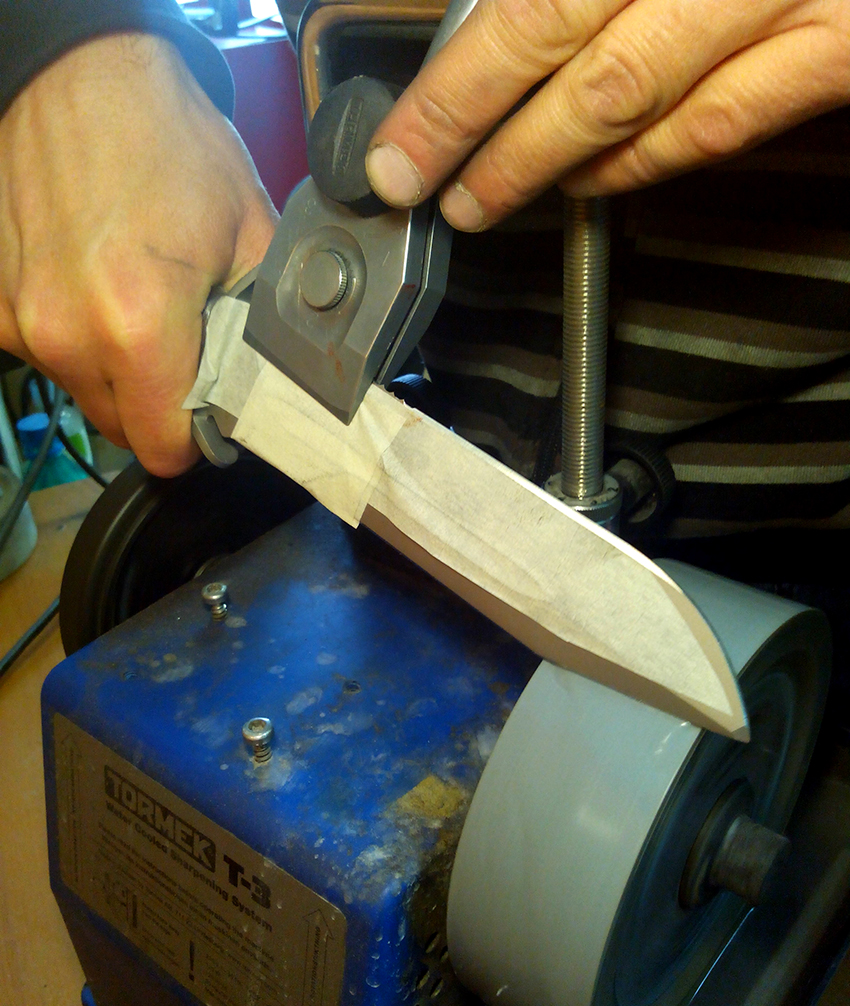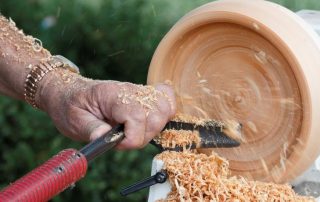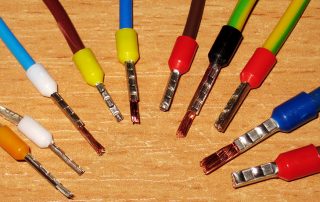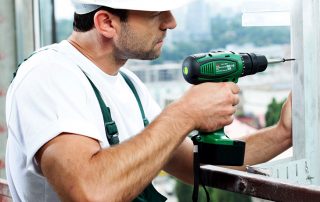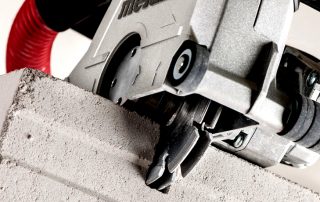Even the best knife requires sharpening from time to time to regain sharpness. If the device is not sharpened, it will cease to function and may cause injury, because the dull blade easily falls off the surface. Instead of giving the device to the master for sharpening, you can do it yourself. A do-it-yourself knife sharpener is not too complicated to perform. Even improvised materials are enough for its manufacture.
Content [Hide]
- 1 Why use a knife sharpener: the main reasons for blunt points
- 2 How to sharpen a knife: the main stages and how it works
- 3 How to choose the right stone to sharpen a knife with your own hands
- 4 DIY knife sharpener: the most common types of designs
- 5 How to make a tool for sharpening knives with your own hands: video of the process
- 6 How to make a homemade emery knife sharpener
Why use a knife sharpener: the main reasons for blunt points
The procedure for sharpening knives with your own hands is a painstaking process, the result of which is the restoration of the cutting abilities of the knife blade. One should not think that a base that is too sharp is more dangerous than a blunt one. A well-sharpened knife easily enters even a soft cut surface, in contrast to a dull blade, which can come off at any time.
Useful advice! The frequency of sharpening depends on the quality of the blade, on the characteristics and frequency of use of the device. At the same time, you need to understand that working with a blunt point is not only dangerous, but also requires more effort when working in the kitchen. The hands are most affected by excessive stress.
Of course, you can take the product to a sharpener, but in this case there is no guarantee that he will carefully handle the device and make a high-quality restoration. You also need to take into account that in order to sharpen not at home, you will need to spend not only money, but also your free time. If you make a homemade knife sharpening device, you won't have to go anywhere and it is easy to bring the knife into working condition in a short time.
Whatever the quality of the blade, it will sooner or later become dull. Even when working with soft material, the steel of the blade loses its cutting ability, and microscopic pieces of steel are removed from the blade, as a result of which not only the sharpness is lost, but also the shape of the cutting surface changes.The deformation of the base also occurs due to the fact that during the cutting process, the blade almost always deflects to one side, it depends on the pressing force and on which hand is cutting. Other reasons for the bluntness of the tip:
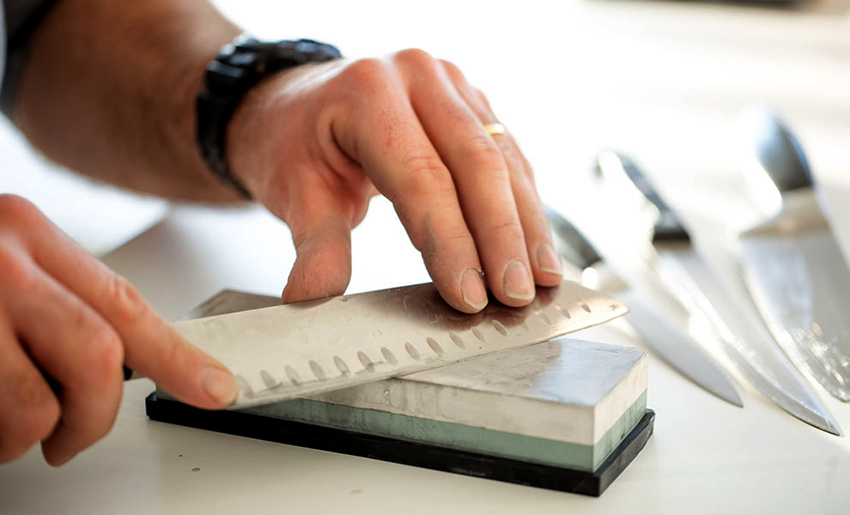
First of all, the frequency of sharpening depends on the quality of the knife and the frequency of its use.
- Improper storage. Experts recommend storing the device on a magnetic surface or in a stand. If put together with other utensils, the constant contact will cause the blade to dull even when the knife is not in use. To ensure proper storage of the device, you can make a stand for knives out of wood with your own hands.
- Dirty food. If you cut soft vegetables or fruits that have dirt or sand on them, the particles will scratch the tip.
- Violation of the washing rules. Experts do not recommend washing knives in a dishwasher at high temperatures, because hot water has a negative effect on steel.
- Working with bones and tendons. The bones of any animal have a high hardness that can break the integrity of the blade. The same can be said for the shells of some fruits.
- Frequent use. When cutting, it is almost impossible to constantly maintain the correct angle at which the base is sharpened. As a result, the sharpened edge of the device bends and it becomes much more difficult to work with such a blade, especially if low-quality material was used in the manufacture.
How to sharpen a knife: the main stages and how it works
To correctly perform everything for sharpening knives, you should adhere to a certain algorithm for performing actions. To obtain a perfectly straight and sharp blade, you will need to go through several stages of work, each of which involves the use of different tools:
- Initial processing or regrinding. The sharpening angle changes, and gross mechanical damage to the base is eliminated. When using a tool for sharpening knives, a significant layer of steel is removed at this stage - until a perfectly flat point is obtained, a coarse-grained abrasive is suitable for this.
- Sharpening. It is carried out using medium and high-grained abrasive. Improper use of the knife sharpener may result in uneven sharpening of the point.
- Grinding or finishing. At this stage, even the smallest damage or scratches are removed, and the blade becomes evenly sharp.
- Polishing. A variety of polishing pastes containing various abrasives are used here. The end of the work is to bring the base to a mirror finish.
Helpful information! Separately from all stages, the straightening process can be carried out, which consists in restoring the position of the side surfaces of the edge, wrapped to the sides. When performing this kind of work, steel is practically not removed from the surface of the knife.
How to choose the right stone to sharpen a knife with your own hands
The simplest homemade knife sharpener is considered to be a stone block. The main thing here is to correctly determine the type of abrasive, especially since from a correctly selected set of stones you can make with your own hands a device for sharpening planer knives and other carpentry or kitchen tools. Before you do knife sharpening machine, you need to know the main types of grain used for work:
- 200-250. The markings are used to indicate the finest abrasives that are rarely used for sharpening blades.
- 300-350. Bars with this grain size are used only when it is required to restore the shape of a severely damaged or deformed blade, as well as for knives with a thick blunt base.Unless the blade has visible cracks or other major changes in appearance, it is not recommended to use such rough sharpening stones.
- 400-500. This marks a medium rough abrasive, which is most often used in difficult cases when it is required to change the direction of the sharpening angle or other characteristics of the tip.
- 600-700. The most commonly used type of grain in the manufacture of do-it-yourself sharpeners, designed for sharpening household tools. Stones with this graininess are more common on store shelves.
- 1000-3000. A fine-grained stone coating ideal for preparing the blade for fine sanding and polishing. With this material, it is easy to bring the blade to the extreme sharpness.
- 3000-6000. This type of abrasive is used to create a perfect mirror finish. Most often, the abrasive is applied using a soft felt or cloth backing.
When choosing a stone for a sharpening device with your own hands, you should also pay attention to its color: the darker the shade of the surface, the more abrasive it will have. A light shade indicates a fine grain of the stone.
Important! The choice of the right abrasive should be approached especially carefully, because the performance of a homemade knife sharpening machine will depend on this.
In general, the following types of stones are chosen for the grinding tool:
- Aquatic. To work with such a stone, it is required to additionally use water in order to abundantly wet the surface. This is necessary so that you can work with the stone longer and more efficiently.
- Oil. In appearance, they are very similar to water, but only in this case, the surface must be treated not with water, but with oil.
- Artificial. For the manufacture of a homemade knife sharpening device, durable stones are used, such as corundum or carbide, which, in addition to good hardness, have such a significant advantage as low cost.
- Natural. The most effective options are considered to be novaculite or Japanese stone. The disadvantages include the complexity of use and high cost.
Some retail outlets even offer to use rubber stones for sharpening, but it must be borne in mind that working with them is extremely difficult and inconvenient. The most useful and convenient is the use of a ceramic abrasive, which combines a large number of positive qualities.
Basic rules that are recommended to be observed when sharpening knives
To properly prepare the edge of the knife for work, you should start sharpening with a bar of medium or coarse grain, and the choice will depend on the initial state of the blade and the degree of its damage. For easier use of a self-made homemade knife sharpener from a bar, it should be securely fastened. Next, you need to determine the correct angle of the blade.
Table of standard values of the angle of sharpening of the blade:
| Device | Tilt angle, degrees |
| Scissors | 45-55 |
| Scissors for working with metal | 75-85 |
| Scalpel | 10-15 |
| Table knife for chopping food on a plate | 55-60 |
| A common kitchen knife for a variety of uses | 20-35 |
| Tourist | 30-45 |
It is interesting! If you look at the drawings of hunting knives, you can pay attention to the fact that they all differ in shape, length and width of the blade. Despite this, the sharpening angle, regardless of the model, varies from 30 to 40 °.
It should be borne in mind that the angle of inclination on each side is half of the required value. The movements when working with the blade should be smooth and without strong jerks. The first movement is carried out from itself, and the base must pass over the stone in its entire length.It is necessary to maintain the same angle of inclination throughout the entire sharpening period, otherwise it will not work to achieve an ideal result.
To maintain the desired angle, when reaching the point where the tip is rounded, turn the knife slightly. It is important to ensure that when sharpening the blade does not completely come off the bar, otherwise the side edge of the blade can be damaged or deformed. Subsequent movements are performed in the opposite direction.
The sharpening work should be carried out until a curving plane appears on the base. To test the sharpness, you do not need to slide your finger over the blade so as not to get hurt. If the job has been done correctly, the edge of the blade will be the same width along its entire length. Having achieved the ideal result on one side, you need to turn the device over and repeat all the steps on the back side.
If there are any irregularities or scratches, you need to take a block with a finer grain and continue to smoothly move the cutting surface along the block in the direction away from you, gradually reducing the degree of pressure. To achieve shine, GOI paste or leather fabric is used as standard.
DIY knife sharpener: the most common types of designs
There are many diagrams and drawings of tools for sharpening knives with your own hands, which differ in different designs and manufacturing methods. You should not choose the simplest versions of the models, because with them it will be possible to perform only one of the stages of work with high quality. Despite the fact that the manufacture of a more complex design will take more materials and funds, the process of grinding the blade itself will take less time, and the result will be noticeably better.
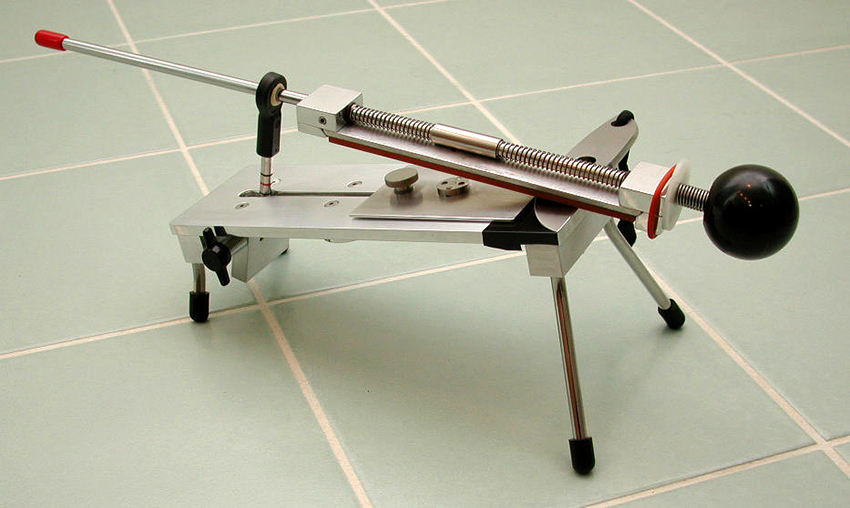
The sharpener in the form of a rail-holder is able to change the angle of inclination and position of the knife
Before you make a device for sharpening knives, you first need to decide on the amount of work that will be performed using the structure. This is due to the fact that in a situation where it is required to put several kitchen knives in order once a week, it is absolutely not necessary to bother with complex drawings of knife sharpeners with your own hands and make a professional machine. If a person is fond of collecting knives, hunting or constantly using knives in work, then it is better to try once.
The simplest hand-made knife is considered a sharpening stone sandwiched between two stops, which is sometimes quite enough for use in ordinary household conditions. To complete the structure, you will need to cut out two wooden triangles and fasten them together with metal screws. The stone used is clamped between two supports.
A feature of such a device for sharpening knives with your own hands is the fact that the triangles are fixed in only one position, but the angle of inclination of the sharpening stone can be changed. For a more accurate setting of the correct angle, it is recommended to use a regular protractor.
Another small do-it-yourself knife sharpener with an adjustable sharpening angle is a movable holder rail equipped with two bars that can change not only the position, but also the angle of inclination. A distinctive feature of the machine is the need for additional fixation on the table using a holder; the simplest and most reliable option in this case is a clamp. The disadvantages of using the structure also include the difficulty of maintaining the correct turning angle throughout the entire period of work.
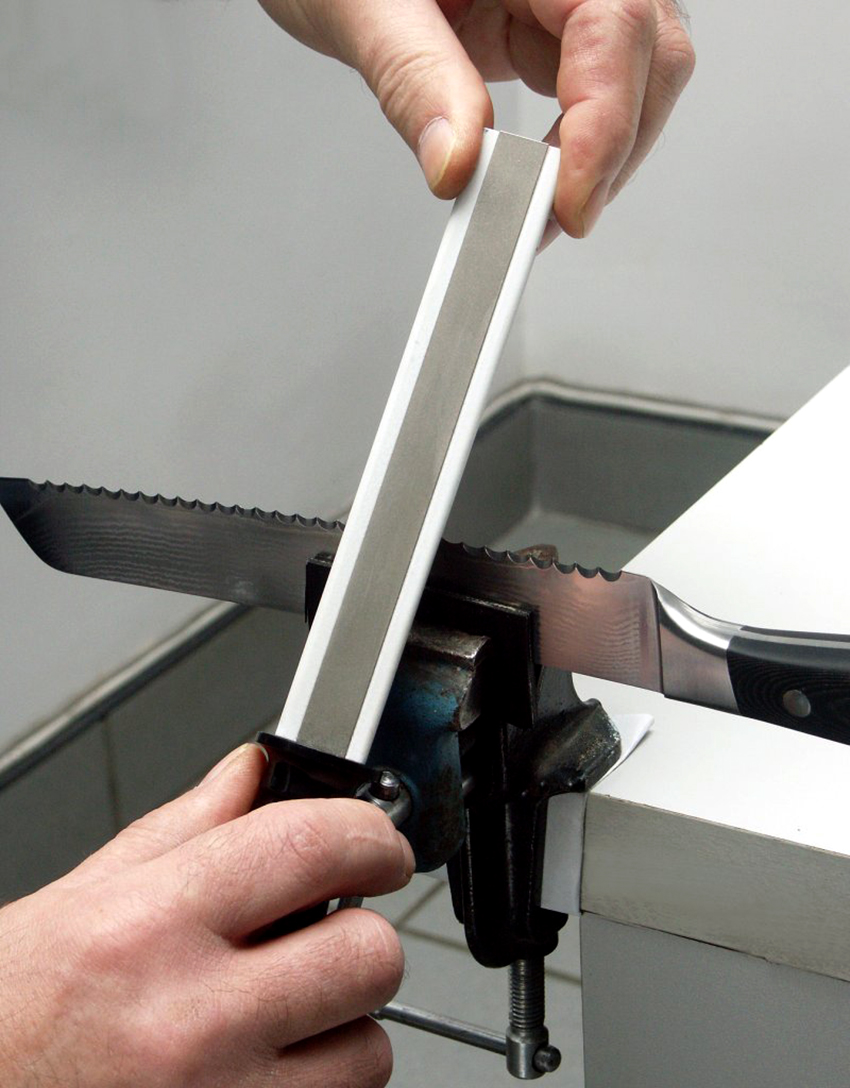
Before choosing a view sharpening machine it is necessary to decide on the scale of work that the sharpener will perform
Interesting information! Very often, drawings of tools for sharpening knives with your own hands can be found on the Internet.So, among the craftsmen, sharpeners made according to the example of the well-known company "Lansky" are very popular, which are distinguished by good performance and ease of execution.
How to make a tool for sharpening knives with your own hands: video of the process
A fairly simple type of sharpening knives with your own hands is a rectangular wooden block, the upper part of which is given a shape that resembles a gable roof. The edges are characterized by a standard angle of inclination of 20-25 °, which is optimal for sharpening kitchen knives. To obtain a more convenient device during manufacturing, you can use knife templates that you plan to sharpen frequently.
Related article:
Knife sharpeners: an easy and quick way to sharpen the blade
Types and characteristics of devices. What materials are used to make sharpeners. How to sharpen different knives correctly.
For sharpening, the blade is applied close to the ridge, after which an abrasive wheel or a whetstone with emery is taken and horizontal movements are made along the sharpening line of the blade. In this case, it turns out to ensure a constant angle and uniform sharpening of the cutting base.
To make a more complex homemade knife sharpening machine with your own hands, you will need to prepare the following materials:
- a board 50 cm wide, length and thickness should be within 15x2 cm;
- a threaded metal stud that will serve as a guide for the whetstone;
- bolts, nuts and screws needed to collect the sharpener;
- nuts for firm fixation;
- material for the substrate under the knife, you can use textolite or plexiglass;
- neodymium magnet, it is important to note that a conventional magnet is not suitable for this purpose due to the low tracking force.
Useful advice! Not all designs require the creation of a preliminary drawing of a knife sharpener; in some cases, it is enough to follow the step-by-step instructions to make the device.
The first stage of the work is to prepare the foundation. To do this, you need to take a piece of chipboard or any other material that is convenient to work with. The board needs to be cleaned and well processed so as not to get a splinter in the process. To create a handy knife sharpener with your own hands, the size of the base board should be approximately 40x12 cm.Then an inclined tabletop is attached to it, which is slightly smaller, for example, 30x10 cm.
To achieve the correct position of the tabletop, it is fastened to the base using a small square piece of board, the recommended height of which is 7 cm, this will be enough to form a convenient angle of inclination of the tabletop. For convenient fixation of the blade, a powerful magnet is attached to the pre-cut cavity in the upper part of the base. Also, a knife holder plate is attached to the tabletop using a self-tapping screw. To be able to change its position depending on the width of the blade, it is recommended to cut a groove that allows you to move the mount up / down.
In addition to the table top, a pin is fixed on the base, which serves as a mount for a carriage with a sharpening bar. The guide is made of a small block, on one side of which a hole is drilled for a stud - 8 mm, and on the other side a cut is made and a clamp is installed, allowing the guide to rotate freely on the stud.
The bar holder is also made of a pin, to one end of which a cambric is fixed, and the total length of the part should not exceed 60 cm. The bar is fixed on the holder using small elements that are fastened in the desired position by means of nuts.As a grinding device, either a stone or a wooden block is used with sandpaper of the desired grain fixed on it. To ensure a complete sharpening cycle on a do-it-yourself knife sharpening machine, you can prepare several bars of different grain sizes at once.
For work, the holder with a sharpening stone is inserted with a cambric into the hole on the guide, and the knife is mounted on a magnet and pressed by a plate, after which you can start sharpening.
How to make a homemade emery knife sharpener
A sharpener or emery is considered universal. A hand-made device is used for sharpening jointer knives, a meat grinder, a chisel and any other tool that needs sharpness. To create such a sharpener, you need to purchase a working small motor. For this, a motor from an old washing machine, juicer or other household appliance is suitable. Another challenge is the need for an adapter that matches the motor shaft diameter perfectly.
Sometimes, to make it, you will need to create a drawing of a knife sharpening machine and provide the dimensions to a turner who can make the necessary part. Then the finished adapter is pushed onto the shaft and secured with a bolt and washer with a nut.
Important! When creating an adapter, the threads on it and on the nut must be cut based on the direction of rotation of the motor shaft. Clockwise rotation produces a left-handed thread, if vice versa - right-handed. In case of non-observance of this rule during sharpening, the nut will work for untwisting, and this is fraught with the fact that the stone will fly off.
It is not necessary to purchase a powerful motor to make emery. The optimal indicator is considered to be 400 W, but even a 100-200 W motor for domestic use will be enough. The number of revolutions is usually in the range of 1000-2000 rpm. To protect yourself from flying metal shavings, it is recommended to additionally make a casing.
As for emery wheels, then for processing non-solid metals, from which most household appliances are made, wheels made of electrocorundum with marking 25A are suitable. In most cases, these circles are white. Due to the peculiarities of the material, the steel does not overheat, and the sharpening quality remains excellent.
Sharpening a knife yourself is not an easy task, especially for a beginner, but over time, with constant practice, you can learn to perform the process no worse than any master. If desired, it is recommended to try to make a do-it-yourself knife sharpening machine, the drawings of which are easy to find in open sources. At the same time, it is not necessary to construct complex structures, because even a simple but competently made sharpener will help keep the blades in perfect condition.
